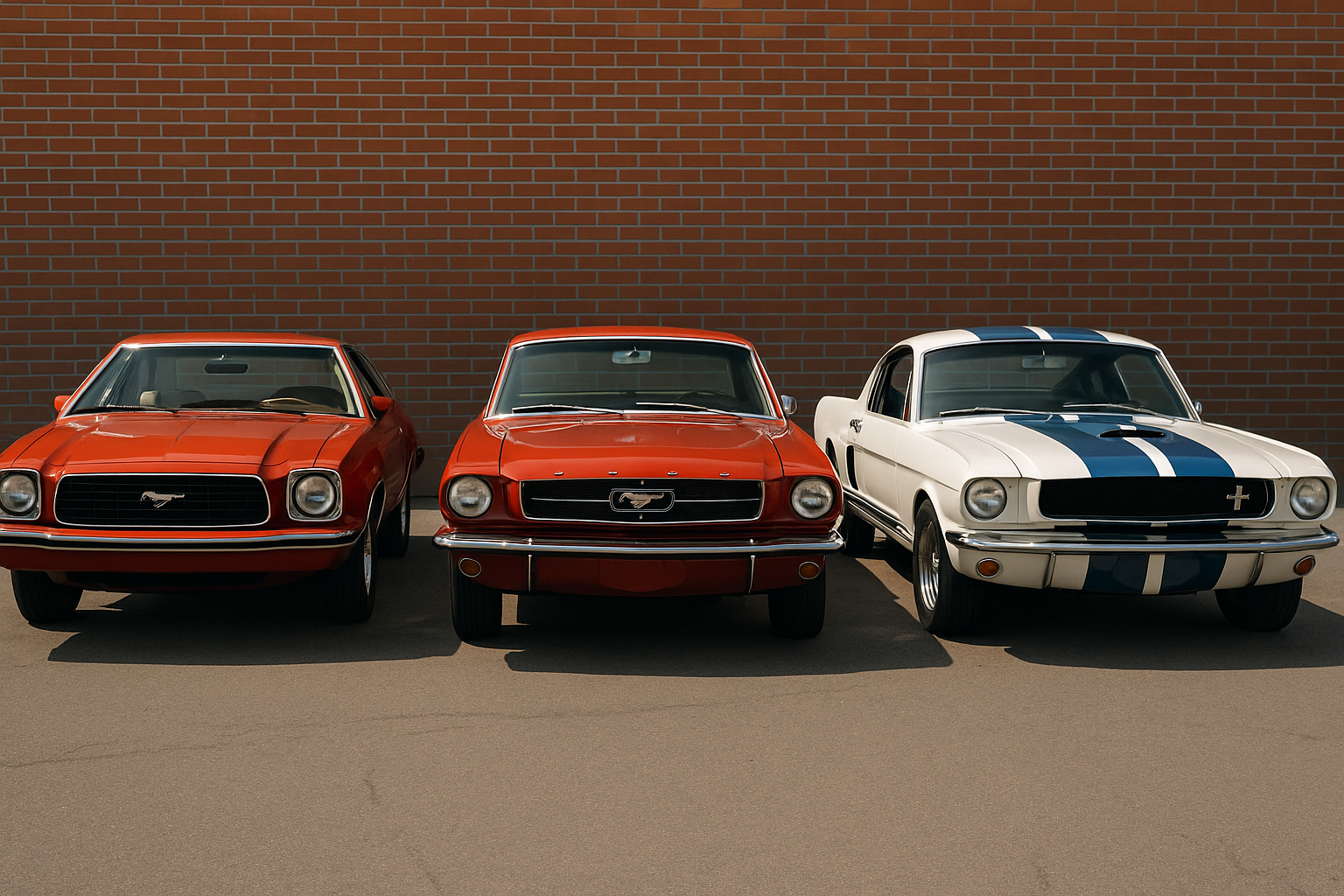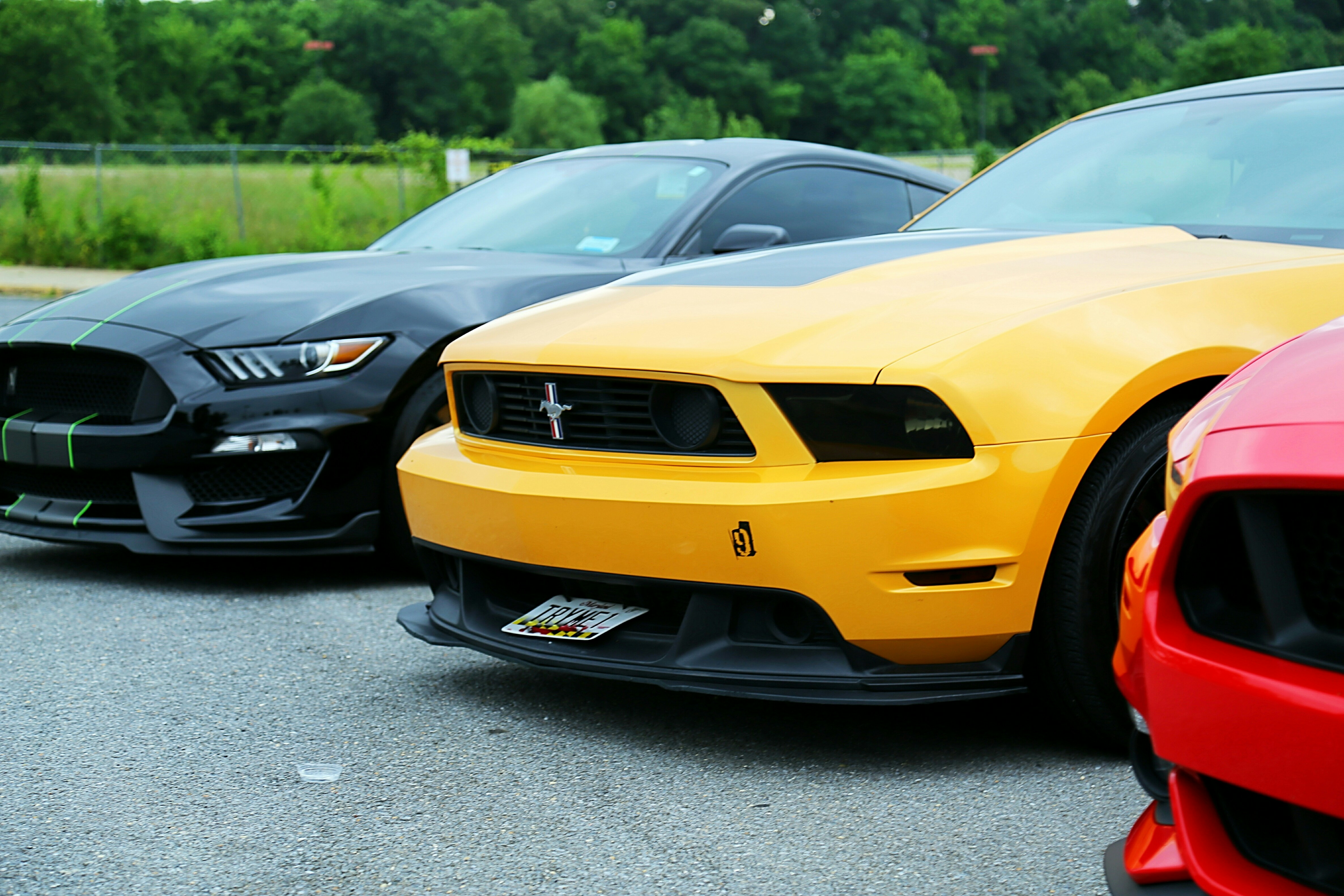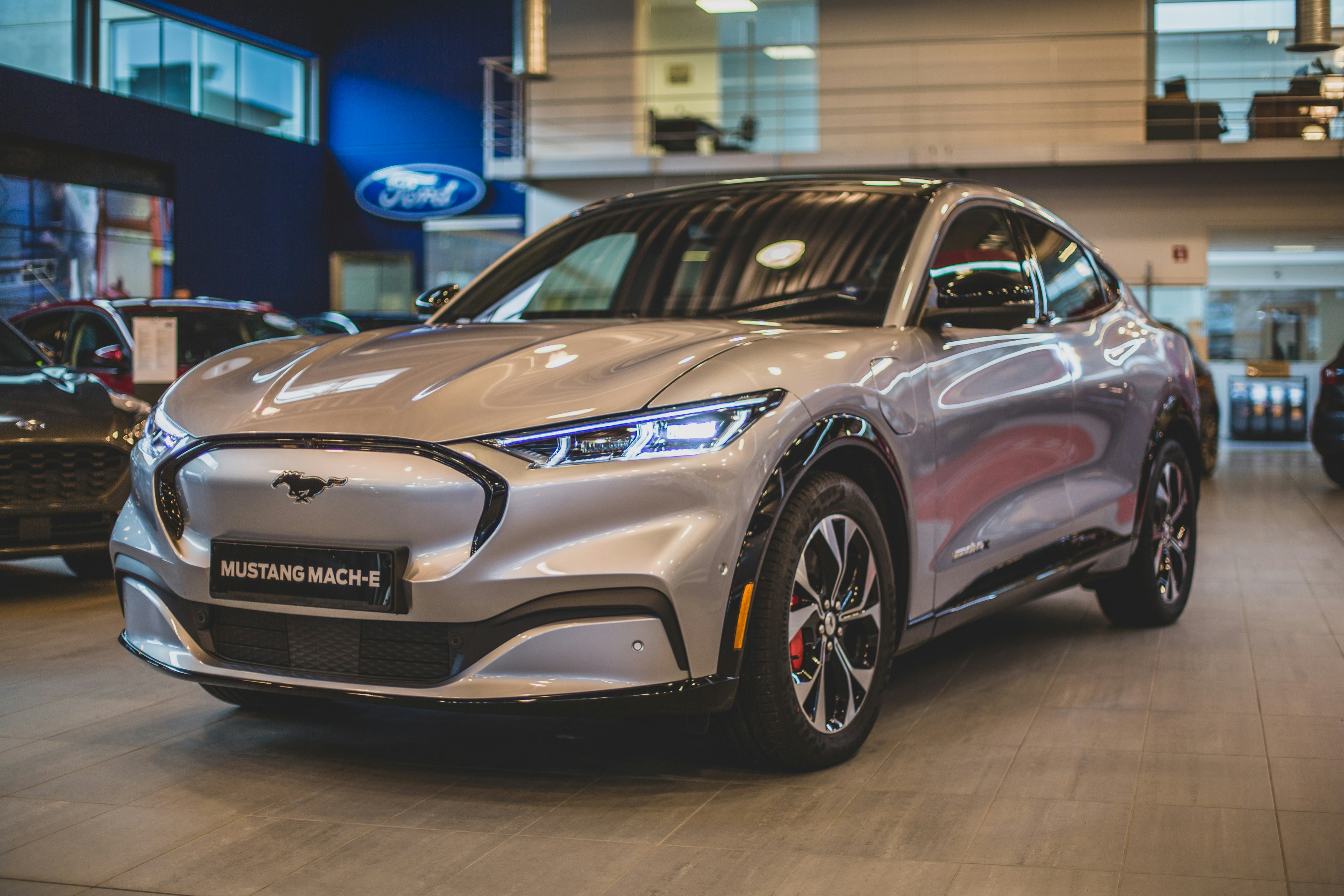The Ford Mustang is an American sports car that was first manufactured by the Ford Motor Company in 1964. The model was unveiled on April 17, 1964, at the New York World's Fair, attracting attention with its pricing, design, and range of equipment options. With its sales success and distinctive design, the Mustang contributed to the emergence of a new vehicle class known as the “pony car.” Offered in various body styles and engine configurations throughout its production history, the Mustang has remained a constant part of Ford’s lineup and has been continuously updated over the years.

Mustang II, 1965 Mustang, 1966 Shelby G.T. 350 Mustang (AI generated)
Birth and First Generation (1964½–1973)
The Mustang was introduced on April 17, 1964, at the New York World's Fair and achieved an impressive sales figure by selling 22,000 units on its first day. By the end of its first year, total sales had reached 418,000 units. Developed under the leadership of Lee Iacocca, the Mustang was designed as a relatively affordable, sporty vehicle aimed at young consumers. In its first generation, engine options included a 170 cid inline-six, a 4.3-liter V8, and a 289 cid V8.

1964 Ford Mustang (AI generated)
Second Generation: Mustang II (1974–1978)
The oil crisis of the early 1970s and rising emission standards increased demand for more compact and fuel-efficient vehicles. Introduced during this period, the Mustang II stood out with its smaller size and economical engine options. However, in terms of performance, it fell short compared to the previous generation.
Third Generation: Fox Body (1979–1993)
Introduced in 1979, the third-generation Mustang was built on Ford's Fox platform and offered a more modern design with improved aerodynamic features. During this era, performance-oriented models returned with the 5.0-liter V8 engine option. Additionally, the 1984 SVO model featured a 2.3-liter turbocharged engine as a distinct alternative.
Fourth Generation: SN95 (1994–2004)
Launched in 1994, the fourth-generation Mustang featured a new design with more rounded lines. Performance was enhanced with the GT and Cobra models during this period. The 2003 SVT Cobra model was equipped with a supercharged V8 engine producing 390 horsepower.
Fifth Generation: Retro Revival (2005–2014)
The fifth-generation Mustang, introduced in 2005, was designed with a retro appearance that paid homage to the styling of the 1960s. During this period, the GT model was offered with a 4.6-liter V8 engine. The Shelby GT500 model featured a 5.4-liter supercharged V8 engine producing 500 horsepower.
Sixth Generation: Global Mustang (2015–2023)
Unveiled in 2015, the sixth-generation Mustang was equipped with an independent rear suspension system and modern technologies. This generation introduced the 2.3-liter turbocharged EcoBoost engine. The GT model delivered 435 horsepower with a 5.0-liter V8 engine. The Shelby GT350 and GT500 models were launched with engines producing 526 and 760 horsepower, respectively.

The Mustang Family (Unsplash)
Seventh Generation: Dark Horse (2024–)
Introduced in 2024, the seventh-generation Mustang retains its traditional V8 engine options and is designed with performance-oriented drivers in mind. The new Dark Horse model delivers 500 horsepower with its 5.0-liter V8 engine and comes equipped with advanced technologies such as an electronic drift brake.
Electric Mustang Mach-E
As part of its entry into the electric vehicle market, Ford introduced the Mach-E, a model that carries the Mustang name. This fully electric SUV was developed with performance-focused technical features and launched with a different body style. Although the Mach-E is part of the Mustang lineup, it has sparked mixed opinions among users regarding its alignment with the traditional Mustang design philosophy.

Ford Mustang Mach-E (Unsplash)
The Ford Mustang has remained a recognized model in the automotive world for over sixty years. Each generation has been equipped with new technologies and offered performance-oriented driving features. As a result, it has been favored by both classic car enthusiasts and drivers seeking modern performance and functionality.


